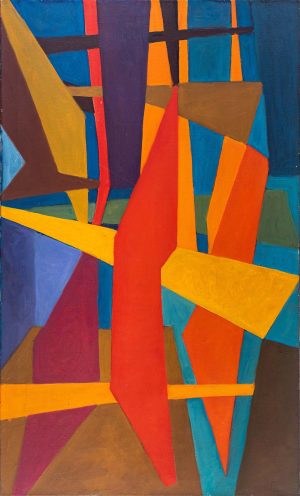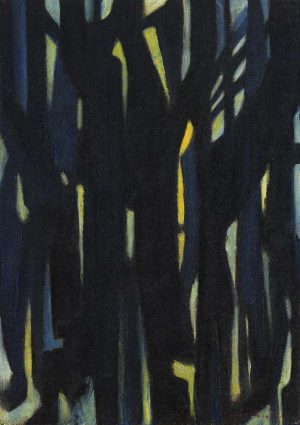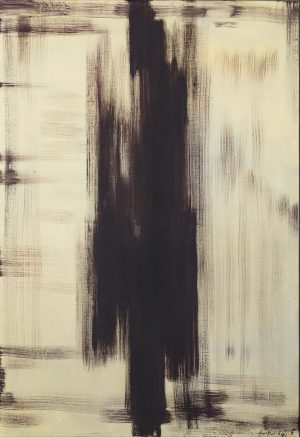
Endre HORTOBÁGYI
Geometry no.1
- Year(s)
- 1970's
- Technique
- oil on canvas
- Size
- 100x60 cm
Artist's introduction
Endre Hortobágyi was a predominant artist of the Hungarian Gestural Painting movement in the 1960s. His œuvre was – in parallel with his tragic fate – only genuinely appreciated by the public following his death. His art, rooted in French Lyrical Abstraction and Informel, is an exceptional achievement of 20th-century non-figurative art in Hungary. The distinctiveness of his painting stems from his individuality. Hortobágyi, as one of his rediscoverers, the renowned international museum director Lóránd Hegyi wrote, believed in the possibility of harmony, in a vision of organic totality: "And this is exactly what makes his artistic attitude romantic, almost anachronistically elevated, and the artist, himself a solitary figure." Born in Budapest during the Second World War, Hortobágyi was "against the grain of the era". He was not admitted to the Hungarian College of Fine Arts, so he could only train as a self-taught artist. Around 1962, he joined the Zugló Circle, established by Sándor Molnár, where young artists – in opposition to the official cultural politics of the time – became acquainted with the contemporary tendencies and theoretical texts of French abstraction as part of a self-propelled initiative. Their painting, which was mainly inspired by Jean Bazaine's teachings, was characterised by the transformation of the material world into an expressive system of brushstrokes, letting the depicted object "transcend itself, becoming a passionate ideogram of the truth". Many supportive intellectuals frequented the "second public sphere" of the apartment in Zugló. However, the group's artistic endeavours were labelled "prohibited" and did not find an official outlet. Their first exhibition (New Aspirations, 1966) was closed down by the authorities. Hortobágyi's paintings of the 1960s were dominated by abstracted transcriptions of landscapes filled with spiritual content, followed by a more spontaneous, pure non-figurativity – inspired by the liberating influence of automatic writing – recalling the work of the French painter Alfred Manessier. While the other artists from his generation who got admitted to the Hungarian College of Fine Arts organised and participated in group exhibitions, Hortobágyi became increasingly isolated from the late 1960s onwards, excluding himself from the art world and society in general. During his solitary years, his art transformed: in addition to the surfaces evoking plants and spreading organically in a jungle-like manner, angular, homogeneous colour fields also emerged. During the last period of his career, referred to as the artist's calligraphic period, he painted broad, thin gestures sometimes arranged in atmospheric, fuming structures, utilising a reduced colour palette. Although the professional public embraced his work at the end of his life, he died a wounded and isolated man after the regime change. His pioneering œuvre remains a particularly powerful strain of Informel Painting in Hungary. Gábor Rieder
More artworks in the artist's collection »

















